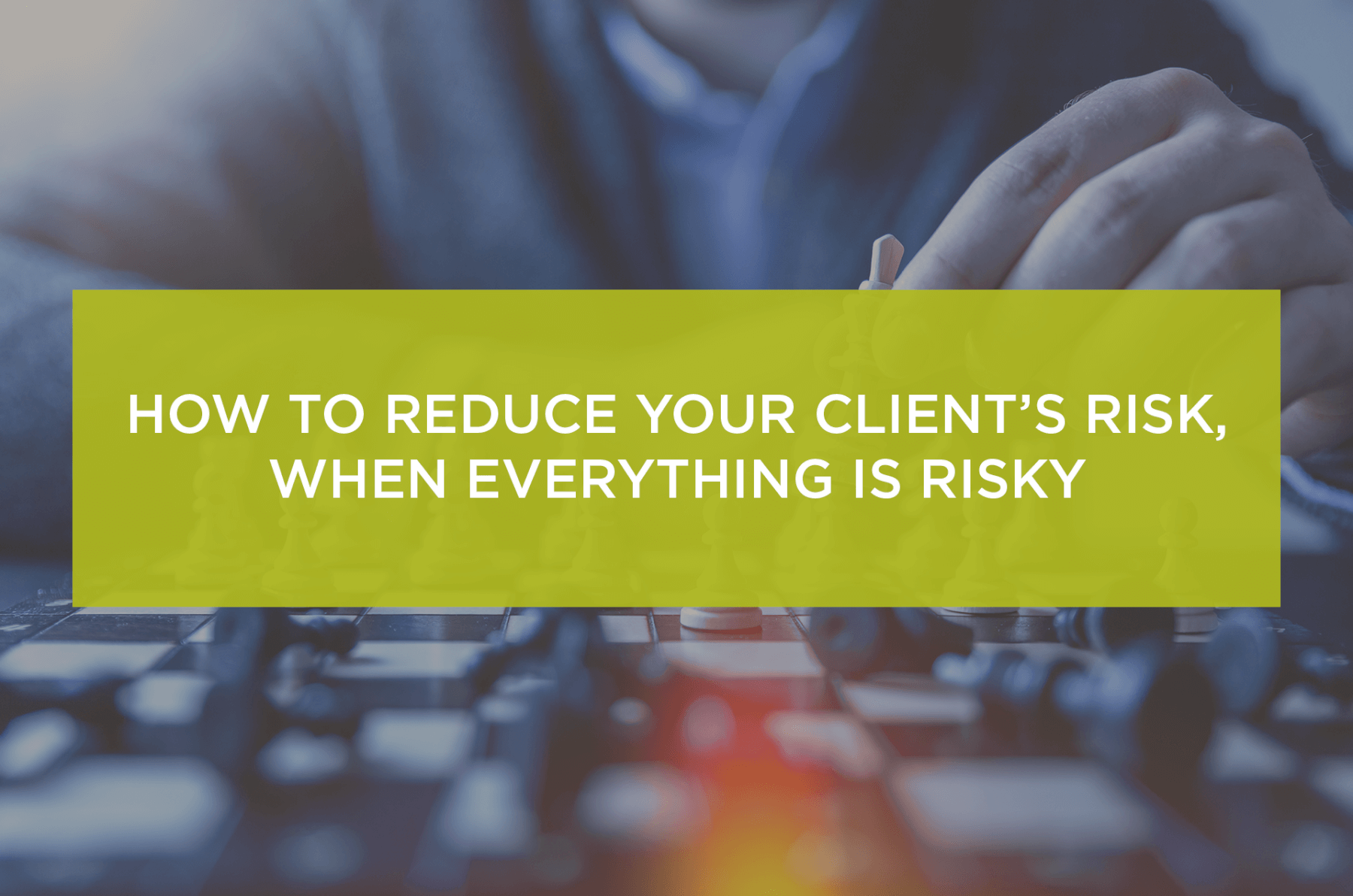How to reduce your client’s risk, when everything is risky
Ambient risks have skyrocketed. Economic, social, and public health risks are massively higher than they were last year. This includes the risk of hiring a professional services firm.
People hire these experts to reduce their risk of negative outcomes.
For example:
- I could draft my own contract, but if I hire an attorney to do it, I am more confident that I can enforce it.
- I could design my own website, but if I hire a web design company, I believe it will be easier to navigate, get higher search rankings, and produce more leads.
- I could get a logo designed on Fiverr, but if I hire a branding agency, I’ll get a mark that will last and will communicate more effectively to my target market.
The money I spend hiring these experts reduces my risk of adverse outcomes and increases the likelihood that the project will get done (and be done well).
How does that impact the decision to hire an expert?
First, when everything is risky, it undermines your claims that you can produce the desired outcome for your clients. They come to us looking to hire certainty, but we can’t offer as much certainty as we would have a year ago.
Second, the money that they are giving you is dear. When the future contains risk, one hedge is to hold onto cash! So to get someone to part with that cash, we need to offer assurances that they’ll see more significant outcomes, impact, and a high return on investment (ROI).
So how do we do that?
Create an offer that reduces risk
Look carefully at the types of services you have been offering and think about narrowing them down. Look for the one thing that you do that is bulletproof and brings the most consistent value to your clients.
For example, maybe you’ve been a “web design firm” for years, but when you look back at your most recent projects, you notice that clients love the content planning phase of those projects. Sure, the design part goes well, and folks are happy with the result, but digging into the content and helping them organize it and make the most of it excites clients. How could you focus on that specific offer?
By focusing on just one small segment of what you do:
- Could you create something that has more certainty for your prospects?
- Could you offer more return in less time?
- Could you be more clear about what they would get out of it?
By narrowing down your scope, you could attract more ideal clients, and you would be making a smaller “ask” (in terms of time and dollars). If you do a great job on content planning, then you are likely to get the web design assignment too!
To find that offer, ask yourself a few questions:
- What can you offer that has relevant case studies and testimonials?
- Who can you offer it to so that your track record and impact on their business or life is more clear? (Who is “just like” these case studies?)
- Specifically, talk about the risks your prospects face and how you have considered them with your service offering.
Get smarter and narrow your target market
2020 has undermined our ability to offer assurances to our clients, making it harder for them to decide to work with us.
To reduce your client’s perception of risk, you need to demonstrate a deep and thorough understanding of the risks they face. You need to know their business generally and understand what might impact their client’s businesses. (Their client’s businesses will considerably impact the success of your efforts, right?)
If you don’t feel like you have the expertise right now, one option would be to do some original research. Think through what questions you want to ask, which would help you reduce the risk for your clients and their clients. Create a survey and do outreach through LinkedIn or Google Survey to find respondents. Philip Morgan talks about this tactic in depth.
Another option would be to read the relevant news sources that impact your client and their markets deeply and thoroughly. One of my clients publishes a weekly email that outlines the ten articles she’s found that impact her target market the most. It keeps her reading and establishes her authority in that marketplace. Her clients and prospects love that she’s curating this list for them!
These types of tactics take time and investment. It’s challenging to do that for 20 different markets (it would be hard to do it well, even for 2 or 3 markets). However, narrowing our focus to just one ideal client and immersing ourselves in our client’s world helps us understand the risks they are facing.
Lowering your client’s risk further
By narrowing your scope and going deep with your target market, you will create the most substantial offer possible. But even with that strong offer, you must work hard to close deals.
Here is an advanced option that you might want to consider: create different pricing levels.
When you offer different pricing packages in a proposal, you can shape an offer that is more attractive to the more price-sensitive or risk-sensitive buyer. So, for each proposal, offer multiple prices. One that is priced lower – but that removes some risk. You’ll also want to include a price that eliminates more risk – but at a higher price point.
For example, you could offer three options:
- One that’s priced hourly; the client assumes much of the risk but at a lower (perceived) price.
- A second that’s priced as a fixed price project with a higher price tag.
- And a third where you are willing to accept some responsibility for the outcome, that, if successful, would yield you an even higher fee.
This gives the prospect the choice of what risks they want to hedge and for how much money!
“All profit is derived from risk.” ~ Peter Drucker
The increased risks our prospects face don’t mean there’s less room for us to make money. The opposite is true! More risk means that there is more profit available.
The increased risks make it harder for clients to decide to choose to work with us. So, we need to work harder to make our offerings clear and valuable. Then provide pricing options that give clients a way to choose.
Contact us to discuss ways you can reduce risk for your clients by crafting a strong offer and narrowing your scope.

